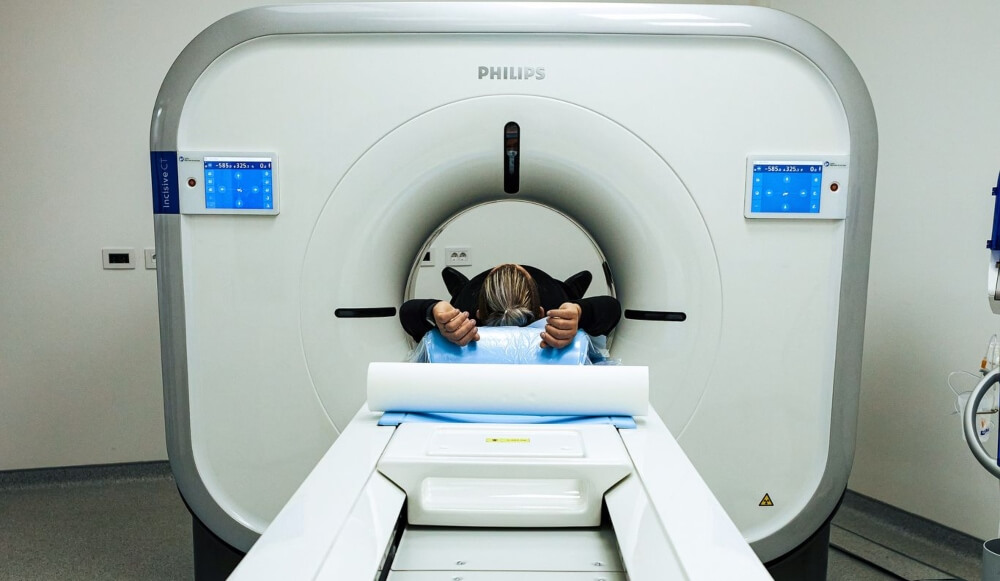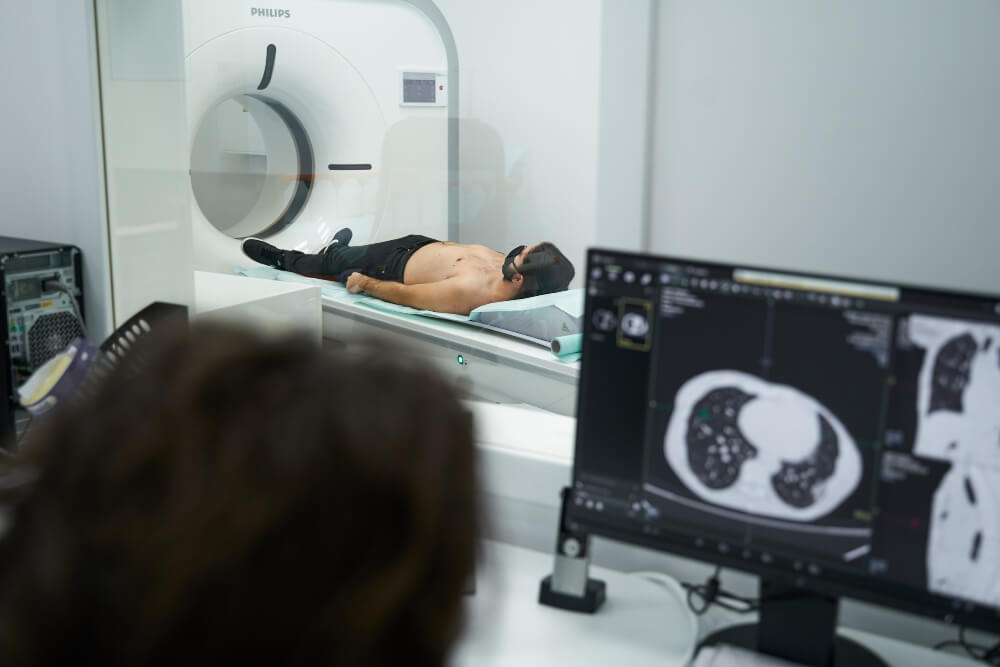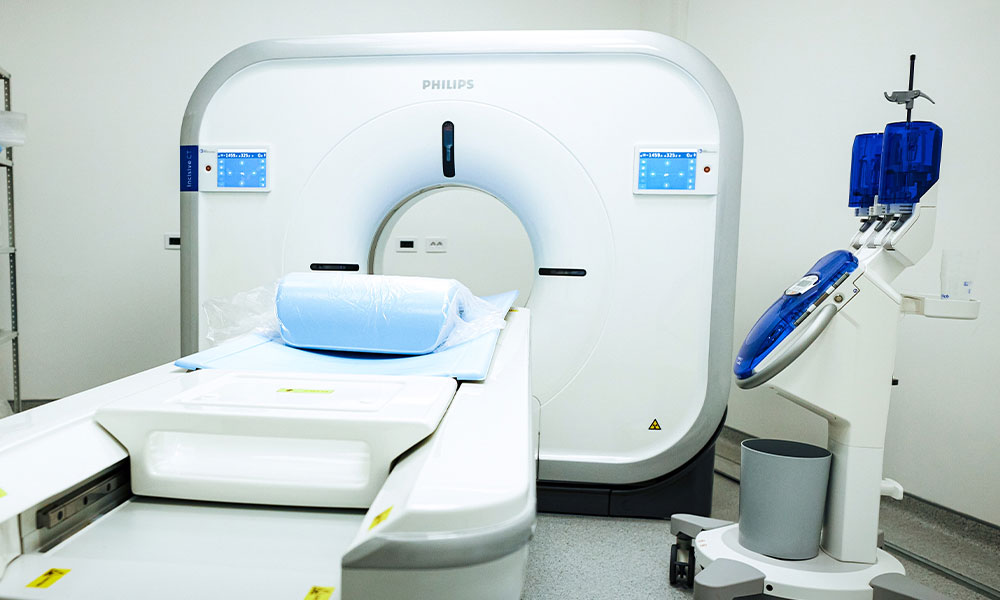What’s the Purpose of Cervical Spine CT Scan?
As mentioned, the main reason why you may need a CT scan of the spine is to see if there are potential post-accident injuries. With the visual model of the specific area of the patient’s spinal column, the doctor can make a diagnosis more accurately. Aside from the accident-related injuries, spine CT may be required in order to examine the following:
- Herniated disks; this can be the main issue behind stubborn back pain
- Potential cervical spine birth defects in kids
- Tumors that might have their root in the spine
- Broken bones and problematic areas in terms of the patient’s stability
- Cervical spine infections
Furthermore, a cervical spine CT scan is an excellent way to get valuable information about the patient’s bone condition, such as potential bone diseases as well as density issues such as osteoporosis and arthritis. With this information, the doctor can pinpoint problematic and/or weakened areas and suggest the next course of action for adequate fracture prevention.
In case of a biopsy or fluid removal from infected areas, it’s not uncommon for a doctor to use the CT scan as a visual guide for the procedure.
How Does a Cervical Spine CT Scan Work?
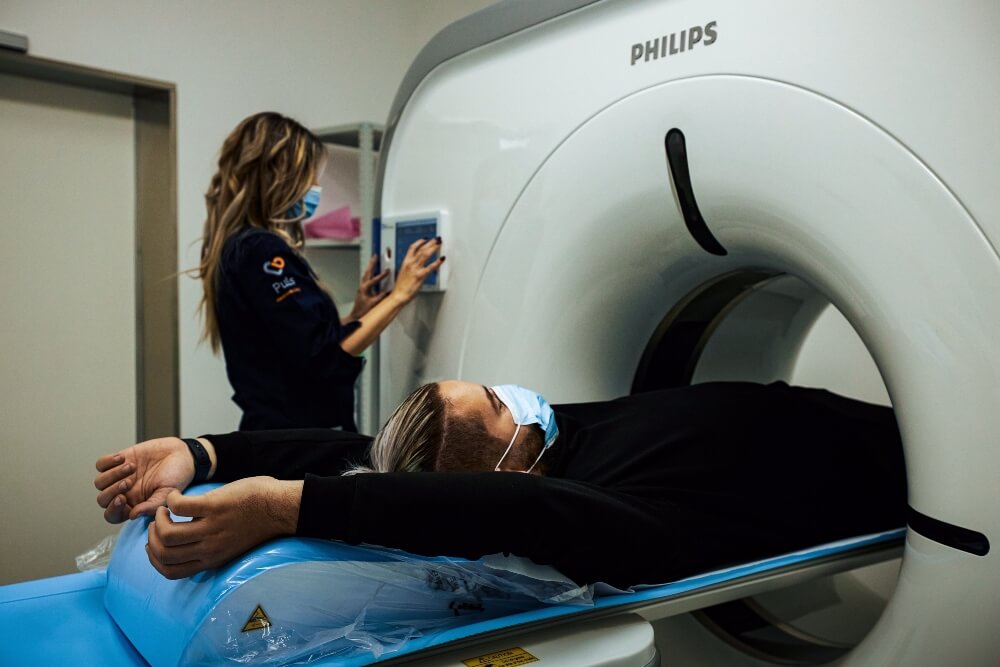
To explain the workings of a CT scan better, let’s discuss the regular X-Ray first. Essentially, for an X-ray to work, it’s necessary to use a minimal amount of radiation that’s directed towards the patient’s body. Due to the fact that different parts of the body absorb radiation differently, the X-ray film will show an image of the area in different colors. That said, bones will appear white, organs and soft tissues will be grey, while the air will show up black.
If you want to understand the CT scan cervical spine process better, imagine a bunch of X-rays that take images in a spiral, instead of just one that takes a flat image. Inside the scanner, X-ray beams move in a circular motion while the computer generates every single image taken based on the radiation readings in the body. All of these images then get combined into one, thus creating the visual 3-D model of the patient’s cervical spine. In that sense, this particular procedure allows for considerably higher accuracy and detail.
What’s the CT Spine Cervical Procedure Like?
In general, a CT scan lasts between 10 and 20 minutes. Some patients, depending on their condition and the area that needs to be inspected, will have to get a contrast dye injection. This will help the doctor see the targeted area more clearly. The dye is usually injected via an intravenous line or near the spinal cord.
When the patient is ready, they’ll have to lie down on their back on the table that goes into the CT scanner’s center, often perceived as tunnel-like. The table with the patient on it then slowly moves through the CT scanner as the X-rays film the images.
It’s important to mention that no movement is allowed while inside the CT scanner. Moving during this procedure can affect the accuracy of the CT images. In case the patient can’t control their movements for whatever reason, it might be necessary to use straps that tie to the table. Even those patients who suffer from claustrophobia should be able to deal with being inside the CT scanner considering how brief the procedure is. However, if you know you simply can’t relax and may suffer a panic attack, don’t hesitate to ask for a sedative before the procedure.
The CT scan is completely pain-free, but patients who need to get injected with contrast dye may experience some warming sensation or metallic taste, which are all effects that should pass after a couple of minutes.
Potential Risks of a Cervical Spine CT Scan
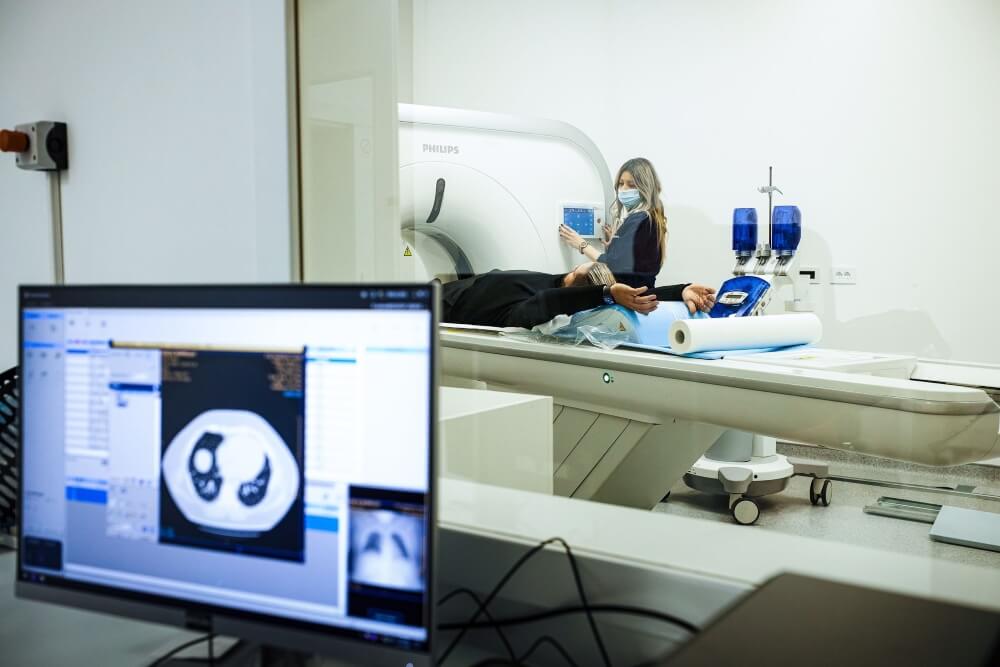
Every exposure to radiation presents a risk of developing cancer, which is why it’s necessary to disclose that CT scans use radiation. However, the amount of radiation is very small, and there’s an extremely low chance for someone to get cancer after going through a single CT scan.
If the patient is pregnant, it’s crucial to talk to the doctor about it. For certain issues, it might be possible to avoid the CT scan and potential radiation exposure risk. However, in case of serious health concerns, diagnosing cervical spine issues and injuries with a CT scan may prove essential for the patient’s well-being, and the radiation exposure during pregnancy cannot be treated as a huge risk comparably.
When it comes to contrast dye, most patients don’t have any issues with it. However, in case the patient is allergic to iodine, which is a common dye ingredient, they might experience some side effects such as vomiting, nausea, or hives. However, anything more serious than that is extremely uncommon.
How to Prepare for a Cervical Spine CT Scan
In case it’s necessary to use the contrast dye, patients have to disclose details about their health and medication to the doctor, especially when it comes to allergies and diabetes. An allergic reaction to the dye is very rare but not impossible. Also, certain diabetes meds can trigger a negative reaction. That said, if the contrast dye is necessary, the patient should avoid eating or drinking 4-6 hours before they get their injection.
If the benefits of the CT scan outweigh the radiation exposure risk in pregnancy, the doctor will most often suggest the patient not to take it. If it’s absolutely necessary for a pregnant patient to go through the CT scan, they’ll need their doctor’s clearance.
To further prepare for the CT scan, it’s necessary to remove all metal objects from your persona, as these can affect the readings. These include items like:
- Removable dental work
- Hearing Aids
- Eyeglasses
- Piercings
- Jewelry
In case you weigh more than 300 pounds (136 kilograms), make sure to inform your doctor about it as some CT scan machines have a weight limit.
Once you’re done with your test, you can resume your day normally. In case it was necessary to use contrast dye, make sure to drink plenty of water. Depending on the CT scan results, your doctor will suggest the next course of action, such as other imaging procedures, blood tests, etc.
Cervical spine injuries and pain in that area need to be checked and examined properly. That said, never wait on your own health. You can always count on us at Pulse Cardiology Center for all of your health and wellness needs, including a cervical spine CT scan. Thanks to the latest equipment and expert staff, we can run all the necessary tests and scans in-house. What’s more, our patients can expect their results within the same day. The scheduling process is simple and quick, as it allows you to book your visit to the doctor within a day and complete everything within 48 hours.

